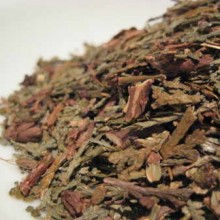Thuja oil is made from the northern white cedar tree, a small-sized, averaging 12 m (40 ft) high, evergreen. The crown is conical, dense, layered and compact. The branches arch. The trunk is strongly tapered, often gnarled with thin red-brown bark. Branchlets are yellowish-green, clad in sheathing foliage, forming flat, fan-shaped sprays.
REPORTED ATTRIBUTES:
Traditional and Emotional uses reportedly include:-
It has no known aromatherapy associations.
Thuja oil is used in pharmaceutical products because of its therapeutic properties, as well as perfume, toiletries, cosmetics, soaps and detergents, because of its aromatic properties.
BLENDS WELL WITH
Armoise, Cedarwood, Citrus Oils, Lavender, Pine Needle
HISTORY:
The Canadian forest, a green band which is over 6000 kilometers long and up to 3000 kilometers wide in some areas, is mainly constituted of coniferous trees. White Cedar is a softwood belonging to the coniferous family.
American Indians have used Cedar leaf tea for headaches and colds, in cough syrups, and in steam baths for rheumatism, arthritis, congestion, and gout; externally, as a wash for swollen feet and burns.
CAUTIONS
Used in excess, this essential can produce unpleasant results; it was officially listed as an abortifacient (a drug or agent causing abortion) and convulsant in overdose. The leaf oil is considered toxic, causing hypo tension (low blood pressure), and convulsions. Fatalities have been reported.





